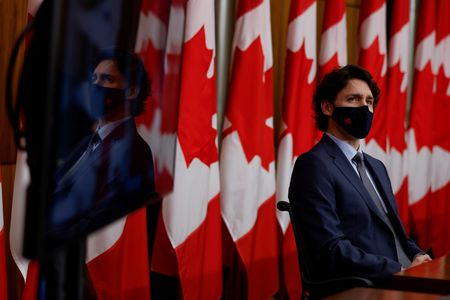
Canada – Impermanence Nation

By Anna Mehler Paperny
TORONTO (Reuters) – Canada is increasingly relying on temporary residents to meet its labor force needs, according to a Reuters analysis of official data, but this phenomenon makes workers vulnerable and fails to provide wage growth or stability to businesses, warn workers, advocates, economists and industry groups.
Temporary residents come to Canada on time-limited visas, some of them tied to specific employers, after which they are expected to return to their countries of origin. While there are ways to become permanent residents, and many come intending to do so, there are often significant hurdles to achieving this.
Offering temporary visas is seen as an easy fix for tight job markets and may allow politicians to avoid the potential political fallout of large numbers of new permanent residents, analysts say.
But this trend can depress labor standards, which employers might otherwise boost to entice hires. People with permanent resident status are better positioned to demand better working conditions, economists say.
Wage suppression can reduce the overall population’s spending power and hurt economic growth, said economist Armine Yalnizyan, Atkinson Fellow on the Future of Workers.
University of Waterloo economist Mikal Skuterud argues that to promote economic equality it may make more sense to prioritize the immigration of higher-skilled people, who will exert downward pressure on the highest salaries while employers of lower-paid workers raise wages to woo employees.
Temporary residents – who often come from Asia, Latin America and the Caribbean – say their precarious immigration status leaves them open to exploitation.
The programs are an “essential tool” for Canada’s economy, its immigration minister told Reuters, but he sees room for broader pathways to permanency.
The number of people living and working in Canada on a temporary basis has grown faster than the annual number of new permanent residents in the past decade, according to Reuters analysis of federal immigration data.
In 2020 temporary residents were more than triple the number of new permanent residents; last year, when Canada set a permanent resident record, it had more than twice as many temporary ones.
This growth has been fueled in part by international students, whose ranks more than doubled in a decade. The number of people in Canada on post-graduate work permits, meanwhile, almost quintupled between 2012 and 2021.
Many international students can work, subject to different limitations, but Canada’s immigration department said it doesn’t know how many do.
PATH TO PERMANENT RESIDENCY
Kathleen Sullivan, CEO of Food and Beverage Canada, said some of her members, strapped for labor, are racing to bring in temporary foreign workers for the first time.
But they would prefer stability, she said.
“If I have a permanent job, I want a permanent employee – I’m investing in training, I’m investing in them,” she said.
Canada’s immigration system prioritizes high-skilled jobs but its labor market needs people doing lower-skilled work, too. Canada’s job vacancy rate in the fourth quarter of 2021 was 5.3%, and was highest in accommodation and food services, at 10.8%. That sector also had the lowest average hourly wages, according to Statistics Canada, at C$15.50 ($12.37) late last year.
Temporary foreign workers saved Louis Bontorin’s family bakery, he said. But his goal is to make them permanent. Of the 60 temporary workers they brought over in five years, he figures all but five are in Canada to stay.
It would make a big difference for people to have permanent residency on arrival, he said. “It really changes the dynamic of how they sort of plan with their family,” he said.
Last year, Canada announced a limited plan to make 90,000 temporary residents permanent. So far, it has given 23,880 permanent residency; the immigration department said more applications are being processed.
Canada’s Immigration, Refugees and Citizenship Minister Sean Fraser said in a January interview it may be time to establish a path to permanent residency.
“Certain temporary programs can develop into a tool to solve permanent and persistent gaps in the labor force. I think there is a better answer.”
(Reporting by Anna Mehler Paperny; Editing by Denny Thomas and Aurora Ellis)
***********************
Disclaimer
The opinions expressed in this article are the author’s own and do not reflect the views of Chanakya Forum. All information provided in this article including timeliness, completeness, accuracy, suitability or validity of information referenced therein, is the sole responsibility of the author. www.chanakyaforum.com does not assume any responsibility for the same.
Chanakya Forum is now on . Click here to join our channel (@ChanakyaForum) and stay updated with the latest headlines and articles.
Important
We work round the clock to bring you the finest articles and updates from around the world. There is a team that works tirelessly to ensure that you have a seamless reading experience. But all this costs money. Please support us so that we keep doing what we do best. Happy Reading
Support Us





















POST COMMENTS (0)